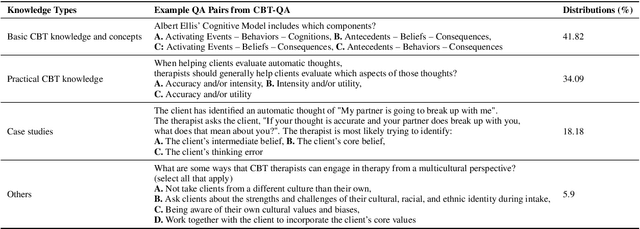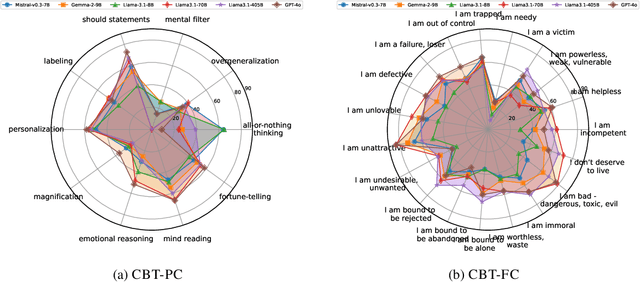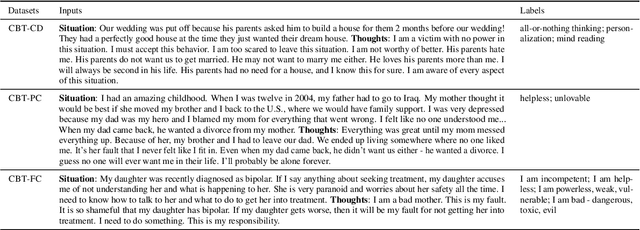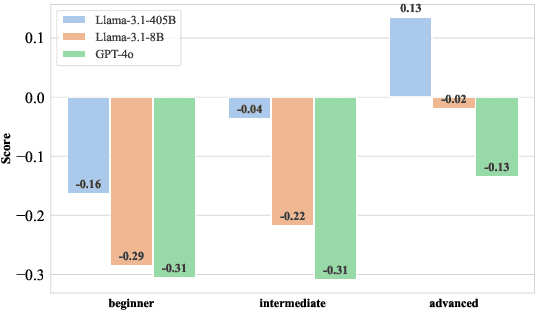Fei Fang
REALM: A Dataset of Real-World LLM Use Cases
Mar 24, 2025Abstract:Large Language Models, such as the GPT series, have driven significant industrial applications, leading to economic and societal transformations. However, a comprehensive understanding of their real-world applications remains limited. To address this, we introduce REALM, a dataset of over 94,000 LLM use cases collected from Reddit and news articles. REALM captures two key dimensions: the diverse applications of LLMs and the demographics of their users. It categorizes LLM applications and explores how users' occupations relate to the types of applications they use. By integrating real-world data, REALM offers insights into LLM adoption across different domains, providing a foundation for future research on their evolving societal roles. A dedicated dashboard https://realm-e7682.web.app/ presents the data.
M3HF: Multi-agent Reinforcement Learning from Multi-phase Human Feedback of Mixed Quality
Mar 06, 2025Abstract:Designing effective reward functions in multi-agent reinforcement learning (MARL) is a significant challenge, often leading to suboptimal or misaligned behaviors in complex, coordinated environments. We introduce Multi-agent Reinforcement Learning from Multi-phase Human Feedback of Mixed Quality (M3HF), a novel framework that integrates multi-phase human feedback of mixed quality into the MARL training process. By involving humans with diverse expertise levels to provide iterative guidance, M3HF leverages both expert and non-expert feedback to continuously refine agents' policies. During training, we strategically pause agent learning for human evaluation, parse feedback using large language models to assign it appropriately and update reward functions through predefined templates and adaptive weight by using weight decay and performance-based adjustments. Our approach enables the integration of nuanced human insights across various levels of quality, enhancing the interpretability and robustness of multi-agent cooperation. Empirical results in challenging environments demonstrate that M3HF significantly outperforms state-of-the-art methods, effectively addressing the complexities of reward design in MARL and enabling broader human participation in the training process.
$\text{M}^3\text{HF}$: Multi-agent Reinforcement Learning from Multi-phase Human Feedback of Mixed Quality
Mar 03, 2025Abstract:Designing effective reward functions in multi-agent reinforcement learning (MARL) is a significant challenge, often leading to suboptimal or misaligned behaviors in complex, coordinated environments. We introduce Multi-agent Reinforcement Learning from Multi-phase Human Feedback of Mixed Quality ($\text{M}^3\text{HF}$), a novel framework that integrates multi-phase human feedback of mixed quality into the MARL training process. By involving humans with diverse expertise levels to provide iterative guidance, $\text{M}^3\text{HF}$ leverages both expert and non-expert feedback to continuously refine agents' policies. During training, we strategically pause agent learning for human evaluation, parse feedback using large language models to assign it appropriately and update reward functions through predefined templates and adaptive weight by using weight decay and performance-based adjustments. Our approach enables the integration of nuanced human insights across various levels of quality, enhancing the interpretability and robustness of multi-agent cooperation. Empirical results in challenging environments demonstrate that $\text{M}^3\text{HF}$ significantly outperforms state-of-the-art methods, effectively addressing the complexities of reward design in MARL and enabling broader human participation in the training process.
Grounded Persuasive Language Generation for Automated Marketing
Feb 24, 2025



Abstract:This paper develops an agentic framework that employs large language models (LLMs) to automate the generation of persuasive and grounded marketing content, using real estate listing descriptions as our focal application domain. Our method is designed to align the generated content with user preferences while highlighting useful factual attributes. This agent consists of three key modules: (1) Grounding Module, mimicking expert human behavior to predict marketable features; (2) Personalization Module, aligning content with user preferences; (3) Marketing Module, ensuring factual accuracy and the inclusion of localized features. We conduct systematic human-subject experiments in the domain of real estate marketing, with a focus group of potential house buyers. The results demonstrate that marketing descriptions generated by our approach are preferred over those written by human experts by a clear margin. Our findings suggest a promising LLM-based agentic framework to automate large-scale targeted marketing while ensuring responsible generation using only facts.
Cooperative Strategic Planning Enhances Reasoning Capabilities in Large Language Models
Oct 25, 2024



Abstract:Enhancing the reasoning capabilities of large language models (LLMs) is crucial for enabling them to tackle complex, multi-step problems. Multi-agent frameworks have shown great potential in enhancing LLMs' reasoning capabilities. However, the lack of effective cooperation between LLM agents hinders their performance, especially for multi-step reasoning tasks. This paper proposes a novel cooperative multi-agent reasoning framework (CoPlanner) by separating reasoning steps and assigning distinct duties to different agents. CoPlanner consists of two LLM agents: a planning agent and a reasoning agent. The planning agent provides high-level strategic hints, while the reasoning agent follows these hints and infers answers. By training the planning agent's policy through the interactive reasoning process via Proximal Policy Optimization (PPO), the LLaMA-3-8B-based CoPlanner outperforms the previous best method by 9.94\% on LogiQA and 3.09\% on BBH. Our results demonstrate that the guidance from the planning agent and the effective cooperation between the agents contribute to the superior performance of CoPlanner in tackling multi-step reasoning problems.
CBT-Bench: Evaluating Large Language Models on Assisting Cognitive Behavior Therapy
Oct 17, 2024



Abstract:There is a significant gap between patient needs and available mental health support today. In this paper, we aim to thoroughly examine the potential of using Large Language Models (LLMs) to assist professional psychotherapy. To this end, we propose a new benchmark, CBT-BENCH, for the systematic evaluation of cognitive behavioral therapy (CBT) assistance. We include three levels of tasks in CBT-BENCH: I: Basic CBT knowledge acquisition, with the task of multiple-choice questions; II: Cognitive model understanding, with the tasks of cognitive distortion classification, primary core belief classification, and fine-grained core belief classification; III: Therapeutic response generation, with the task of generating responses to patient speech in CBT therapy sessions. These tasks encompass key aspects of CBT that could potentially be enhanced through AI assistance, while also outlining a hierarchy of capability requirements, ranging from basic knowledge recitation to engaging in real therapeutic conversations. We evaluated representative LLMs on our benchmark. Experimental results indicate that while LLMs perform well in reciting CBT knowledge, they fall short in complex real-world scenarios requiring deep analysis of patients' cognitive structures and generating effective responses, suggesting potential future work.
TypedThinker: Typed Thinking Improves Large Language Model Reasoning
Oct 02, 2024Abstract:Despite significant advancements in the reasoning capabilities of Large Language Models (LLMs), the lack of diverse reasoning solutions often makes them trapped in a limited solution search area. In this paper, we propose TypedThinker, a novel framework that enhances LLMs' problem-solving abilities by incorporating multiple reasoning types (deductive, inductive, abductive, and analogical). Our analysis across four benchmarks reveals that different reasoning types uniquely solve distinct sets of problems, highlighting the importance of diverse thinking approaches. TypedThinker addresses two key challenges: selecting appropriate reasoning types for given problems and effectively implementing specific reasoning types. Through self-training on successful experiences, TypedThinker learns an implicit policy for reasoning type selection and application. Experimental results demonstrate significant improvements over baseline models, with accuracy increases of 3.4% for Mistral 7B and 16.7% for LLaMA3 8B across four reasoning benchmarks. Notably, TypedThinker shows effective generalization to new benchmarks and can further enhance the reasoning capability of powerful models like GPT-4o. The code is released at https://github.com/dqwang122/ThinkHub.
Leveraging a Cognitive Model to Measure Subjective Similarity of Human and GPT-4 Written Content
Aug 30, 2024



Abstract:Cosine similarity between two documents can be computed using token embeddings formed by Large Language Models (LLMs) such as GPT-4, and used to categorize those documents across a range of uses. However, these similarities are ultimately dependent on the corpora used to train these LLMs, and may not reflect subjective similarity of individuals or how their biases and constraints impact similarity metrics. This lack of cognitively-aware personalization of similarity metrics can be particularly problematic in educational and recommendation settings where there is a limited number of individual judgements of category or preference, and biases can be particularly relevant. To address this, we rely on an integration of an Instance-Based Learning (IBL) cognitive model with LLM embeddings to develop the Instance-Based Individualized Similarity (IBIS) metric. This similarity metric is beneficial in that it takes into account individual biases and constraints in a manner that is grounded in the cognitive mechanisms of decision making. To evaluate the IBIS metric, we also introduce a dataset of human categorizations of emails as being either dangerous (phishing) or safe (ham). This dataset is used to demonstrate the benefits of leveraging a cognitive model to measure the subjective similarity of human participants in an educational setting.
Concept-Based Interpretable Reinforcement Learning with Limited to No Human Labels
Jul 22, 2024



Abstract:Recent advances in reinforcement learning (RL) have predominantly leveraged neural network-based policies for decision-making, yet these models often lack interpretability, posing challenges for stakeholder comprehension and trust. Concept bottleneck models offer an interpretable alternative by integrating human-understandable concepts into neural networks. However, a significant limitation in prior work is the assumption that human annotations for these concepts are readily available during training, necessitating continuous real-time input from human annotators. To overcome this limitation, we introduce a novel training scheme that enables RL algorithms to efficiently learn a concept-based policy by only querying humans to label a small set of data, or in the extreme case, without any human labels. Our algorithm, LICORICE, involves three main contributions: interleaving concept learning and RL training, using a concept ensembles to actively select informative data points for labeling, and decorrelating the concept data with a simple strategy. We show how LICORICE reduces manual labeling efforts to to 500 or fewer concept labels in three environments. Finally, we present an initial study to explore how we can use powerful vision-language models to infer concepts from raw visual inputs without explicit labels at minimal cost to performance.
Multi-Agent Imitation Learning: Value is Easy, Regret is Hard
Jun 06, 2024



Abstract:We study a multi-agent imitation learning (MAIL) problem where we take the perspective of a learner attempting to coordinate a group of agents based on demonstrations of an expert doing so. Most prior work in MAIL essentially reduces the problem to matching the behavior of the expert within the support of the demonstrations. While doing so is sufficient to drive the value gap between the learner and the expert to zero under the assumption that agents are non-strategic, it does not guarantee robustness to deviations by strategic agents. Intuitively, this is because strategic deviations can depend on a counterfactual quantity: the coordinator's recommendations outside of the state distribution their recommendations induce. In response, we initiate the study of an alternative objective for MAIL in Markov Games we term the regret gap that explicitly accounts for potential deviations by agents in the group. We first perform an in-depth exploration of the relationship between the value and regret gaps. First, we show that while the value gap can be efficiently minimized via a direct extension of single-agent IL algorithms, even value equivalence can lead to an arbitrarily large regret gap. This implies that achieving regret equivalence is harder than achieving value equivalence in MAIL. We then provide a pair of efficient reductions to no-regret online convex optimization that are capable of minimizing the regret gap (a) under a coverage assumption on the expert (MALICE) or (b) with access to a queryable expert (BLADES).
 Add to Chrome
Add to Chrome Add to Firefox
Add to Firefox Add to Edge
Add to Edge